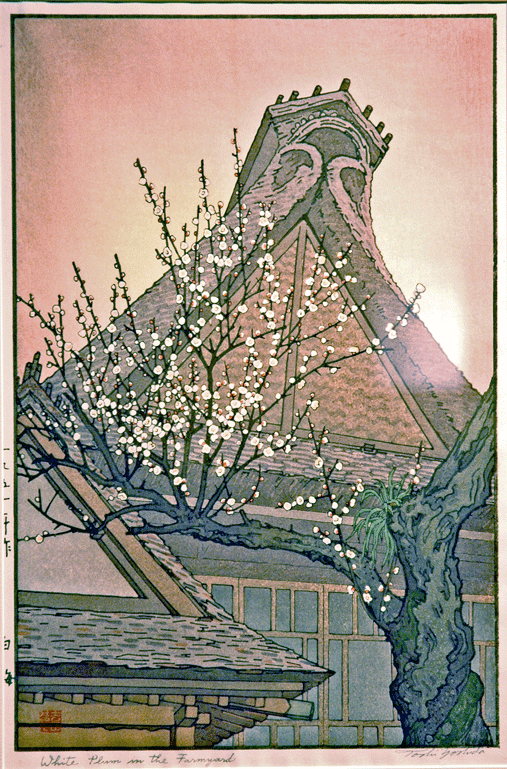White Plum in the Farmyard, Toshi Yoshida, woodblock print, 1951
The image White Plum in the Farmyard is a traditional Japanese woodblock print completed by Toshi Yoshida, the eldest son of famous painter and printmaker Hiroshi Yoshida. Born in 1911 in Tokyo, Toshi learned quickly from both his father and mother. He loved to travel the world, sketching many of the landscapes and animals he observed. After his father’s death in 1950, Toshi dabbled in the realm of abstract art for a while. However, this print, done in 1951, is more reminiscent of some of his earlier work. The piece illustrates a portion of a white plum tree blossoming in the springtime, in front of a Japanese style builiding. The delicate buds of the plum tree are contrasted sharply when placed in front of the solid wooden farm structure. The earthy brown and tan shades of the roof gable provide a neutral backdrop, displaying the beautiful white blossoms of spring. These warm neutrals dominate the image and are only disrupted by the small patch of green foliage growing on the trunk of the tree.
This print was completed at a time when Toshi Yoshida was experimenting with abstract illustrations, yet it is more suggestive of his earlier landscape prints. The print is known as an oban print, meaning that it is the standard size of most Japanese woodblock prints. It is also a tate-e print, or a vertically aligned image. This illustration is prized for its excellent shading and gradation of the tan sky background, a technique used by printers called bokashi. The red seal of Toshi Yoshida is present in the lower left corner of the piece, and Yoshida’s penciled signature is in the right. Toshi Yoshida worked the following decades and eventually opened a printmaking school in 1980, until illness made him too weak to continue. He continued to supervise work done in the studio until his death in 1995.
Nowlan Freese and Kathryn LaNasa
